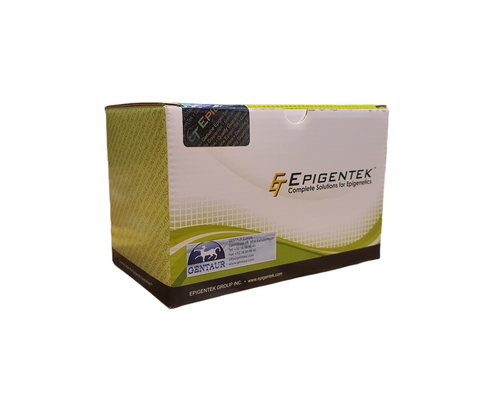Product Description
ACTRT2 Antibody | 30-823 | ProSci
Host: Rabbit
Reactivity: Human, Mouse, Rat
Homology: N/A
Immunogen: Antibody produced in rabbits immunized with a synthetic peptide corresponding a region of human ACTRT2.
Research Area: Other
Tested Application: E, WB
Application: ACTRT2 antibody can be used for detection of ACTRT2 by ELISA at 1:1562500. ACTRT2 antibody can be used for detection of ACTRT2 by western blot at 1 μg/mL, and HRP conjugated secondary antibody should be diluted 1:50, 000 - 100, 000.
Specificiy: N/A
Positive Control 1: Cat. No. XBL-10413 - Fetal Skeletal Muscle Tissue Lysate
Positive Control 2: N/A
Positive Control 3: N/A
Positive Control 4: N/A
Positive Control 5: N/A
Positive Control 6: N/A
Molecular Weight: 42 kDa
Validation: N/A
Isoform: N/A
Purification: Antibody is purified by peptide affinity chromatography method.
Clonality: Polyclonal
Clone: N/A
Isotype: N/A
Conjugate: Unconjugated
Physical State: Liquid
Buffer: Purified antibody supplied in 1x PBS buffer with 0.09% (w/v) sodium azide and 2% sucrose.
Concentration: batch dependent
Storage Condition: For short periods of storage (days) store at 4˚C. For longer periods of storage, store ACTRT2 antibody at -20˚C. As with any antibody avoid repeat freeze-thaw cycles.
Alternate Name: ACTRT2, ARPM2, ARPT2, Arp-T2, FLJ25424, HARPM2
User Note: Optimal dilutions for each application to be determined by the researcher.
BACKGROUND: ACTRT2 belongs to the actin family. Studies have shown that this protein may be involved in cytoskeletal organization similar to other cytoplasmic actin-related protein (ARP) subfamily members. Antibody raised against the human protein has been used to detect the protein by immunoblotting and immunofluorescence microscopy, demonstrating its specific synthesis in the testis, late in spermatid differentiation, and its localization in the calyx.The protein encoded by this intronless gene belongs to the actin family. Studies have shown that this protein may be involved in cytoskeletal organization similar to other cytoplasmic actin-related protein (ARP) subfamily members. Antibody raised against the human protein has been used to detect the protein by immunoblotting and immunofluorescence microscopy, demonstrating its specific synthesis in the testis, late in spermatid differentiation, and its localization in the calyx.
 Euro
Euro
 USD
USD
 British Pound
British Pound
 NULL
NULL














